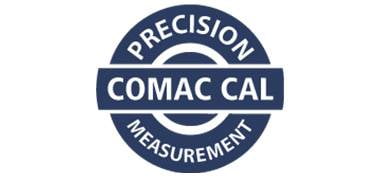Coriolis Meters
How the Coriolis Force works inside a Flow Meter
Coriolis meters have a sine wave voltage applied to an electromagnetic drive which produces an oscillating motion of the tube. The amplitudes are related to the mass flow and the frequency is related to the product density. The reason that the output amplitude changes with flow may be explained by the Coriolis effect. The vibration of the tube gives a slight angular rotation about its center. As the fluid moves away from the center, there is a resultant Coriolis force which opposes the rotational motion. The flow movement toward the center produces a Coriolis force which aids the tube rotation. The resultant force produces the measured sine wave which is measured and converted to the mass flow reading.
A Coriolis flow meter directly and continuously measures mass flow (as opposed to measuring volumetric flow), a fluid parameter that is not temperature dependent. Therefore, the Coriolis meter does not require a correction for changes in fluid variables such as temperature, pressure, viscosity and density.
Coriolis flow meters are known for accuracy of measurement readings, which can approach 0.05% of mass flow. Despite being relatively expensive, the Coriolis meter has high reliability (due to an absence of moving parts in the flow path) resulting in a relatively low cost of ownership. Furthermore, high accuracy can help to increase operating efficiency and save on production costs. Coriolis flow meters are typically used for clean liquids and gases flowing at medium to high velocity. Coriolis meters are especially appropriate for measuring gases because gases are much more affected by temperature and pressure than are liquids.

View our Coriolis mass flow meters
or
use our product comparison table to guide you in selecting the right product for your needs.
Principles of Operation
The effect of the Coriolis force is an apparent deflection of the path of an object that moves within a rotating coordinate system. The object does not actually deviate from its path, but it appears to do so because of the motion of the coordinate system.

View our Coriolis mass flow meters
or
use our product comparison table to guide you in selecting the right product for your needs.
Advantages of Coriolis Meters
- Measure mass flow rate directly
- Suitable for applications where temperature and pressures fluctuate
- No obstructions in the fluid path
- Low cost of ownership
Coriolis Meter Limitations
- May not be suitable for viscous fluids as the pressure drop increases with fluid viscosity
Coriolis flow meters are suitable for a variety of processes requiring mass flow measurement including
- Monitoring concentration and solids content
- Measurement of slurries
- Blending ingredients and additives
- Metering natural-gas consumption
- Pharmaceutical, cosmetic, and biochemical industries
- Custody transfer
- Catalyst addition processes
Need Advice About Coriolis Meters?
iCenta is a instrumentation and control solution specialist with experience in control technologies for diverse applications, fluid types and process conditions. Call iCenta now for advice, sales & technical information on 01722 439 880.












